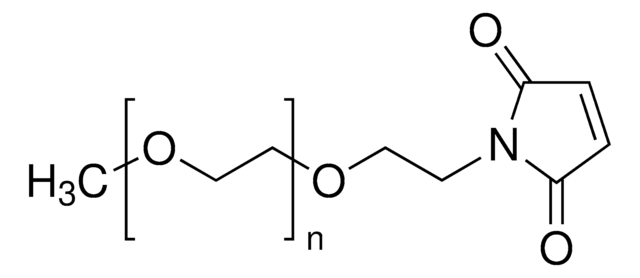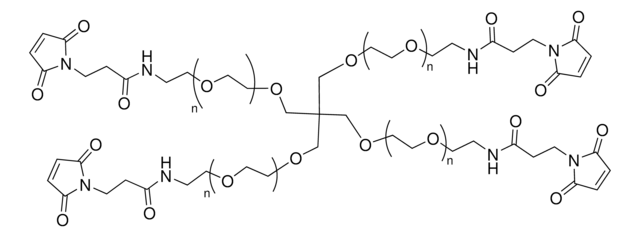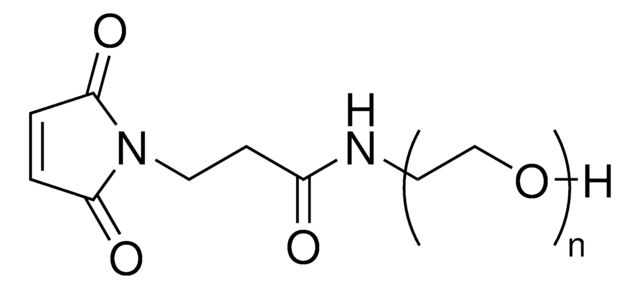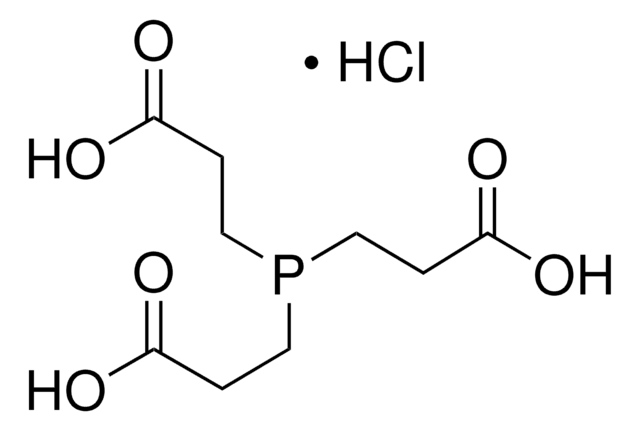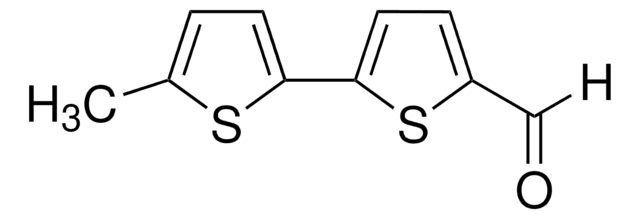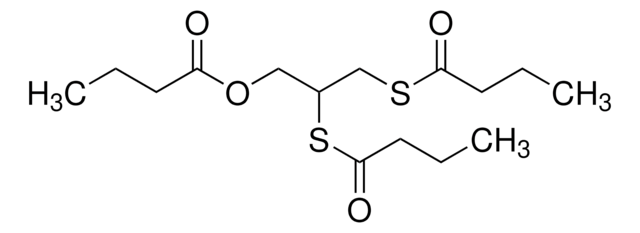712469
Methoxypolyethylene glycol maleimide
PEG average Mn 10,000 g/mol
Synonym(s):
Polyethylene glycol, MeO-PEG-Mal, PEG-maleimide, mono-Methyl polyethylene glycol 2-maleimidoethyl ether
About This Item
Recommended Products
form
powder
Quality Level
mol wt
PEG average Mn 10,000 g/mol
Ω-end
maleimide
α-end
methoxy
storage temp.
−20°C
Looking for similar products? Visit Product Comparison Guide
Application
- Thiol-disulfide redox proteomics in plant research.: This paper discusses the application of thiol-disulfide redox proteomics in plant research, emphasizing the role of redox modifications in protein functions. The use of Methoxypolyethylene glycol maleimide as a PEGylation reagent for bioconjugation in these studies highlights its significance in protein modification and drug delivery systems, providing insights into redox-dependent regulation mechanisms in plants (Muthuramalingam et al., 2010).
Packaging
Storage Class Code
11 - Combustible Solids
WGK
WGK 3
Flash Point(F)
Not applicable
Flash Point(C)
Not applicable
Personal Protective Equipment
Choose from one of the most recent versions:
Already Own This Product?
Find documentation for the products that you have recently purchased in the Document Library.
Articles
Circulatory half-life is a key success factor for new drugs. In this respect, PEGylation or PEG-ing—the modification of potential candidates ranging from non-peptidic small molecules to peptides and proteins, antibody fragments, aptamers, and saccharides or oligonucleotides with polyethylene glycol chains—offers numerous advantages.
Designing biomaterial scaffolds mimicking complex living tissue structures is crucial for tissue engineering and regenerative medicine advancements.
Our team of scientists has experience in all areas of research including Life Science, Material Science, Chemical Synthesis, Chromatography, Analytical and many others.
Contact Technical Service